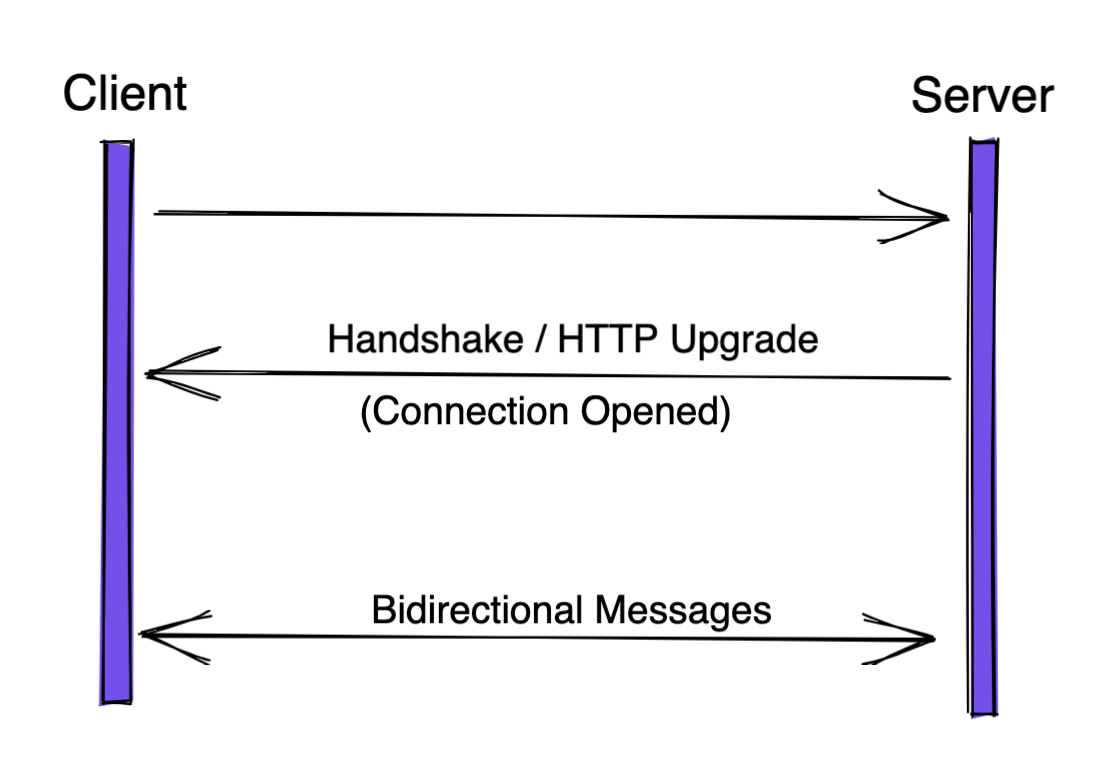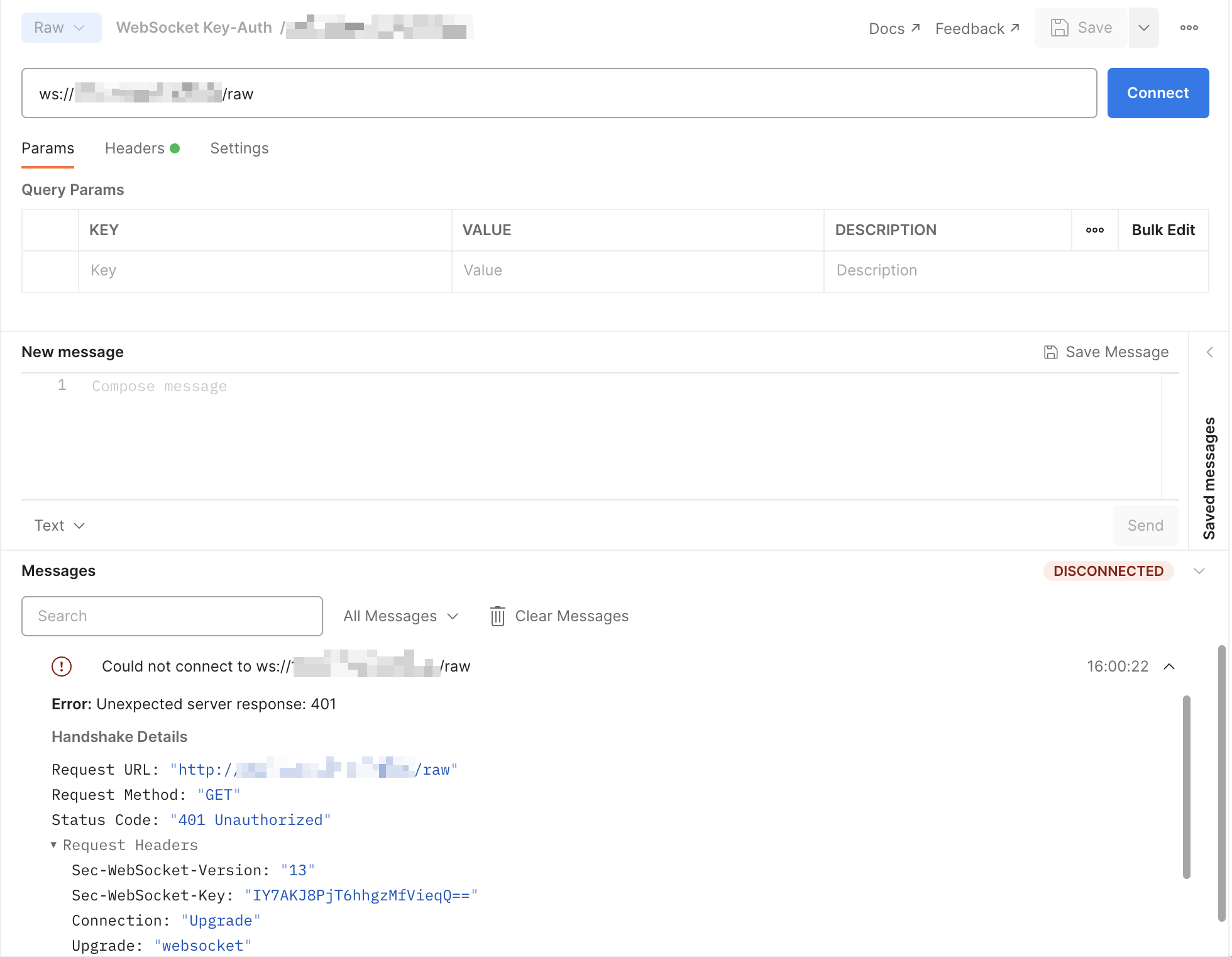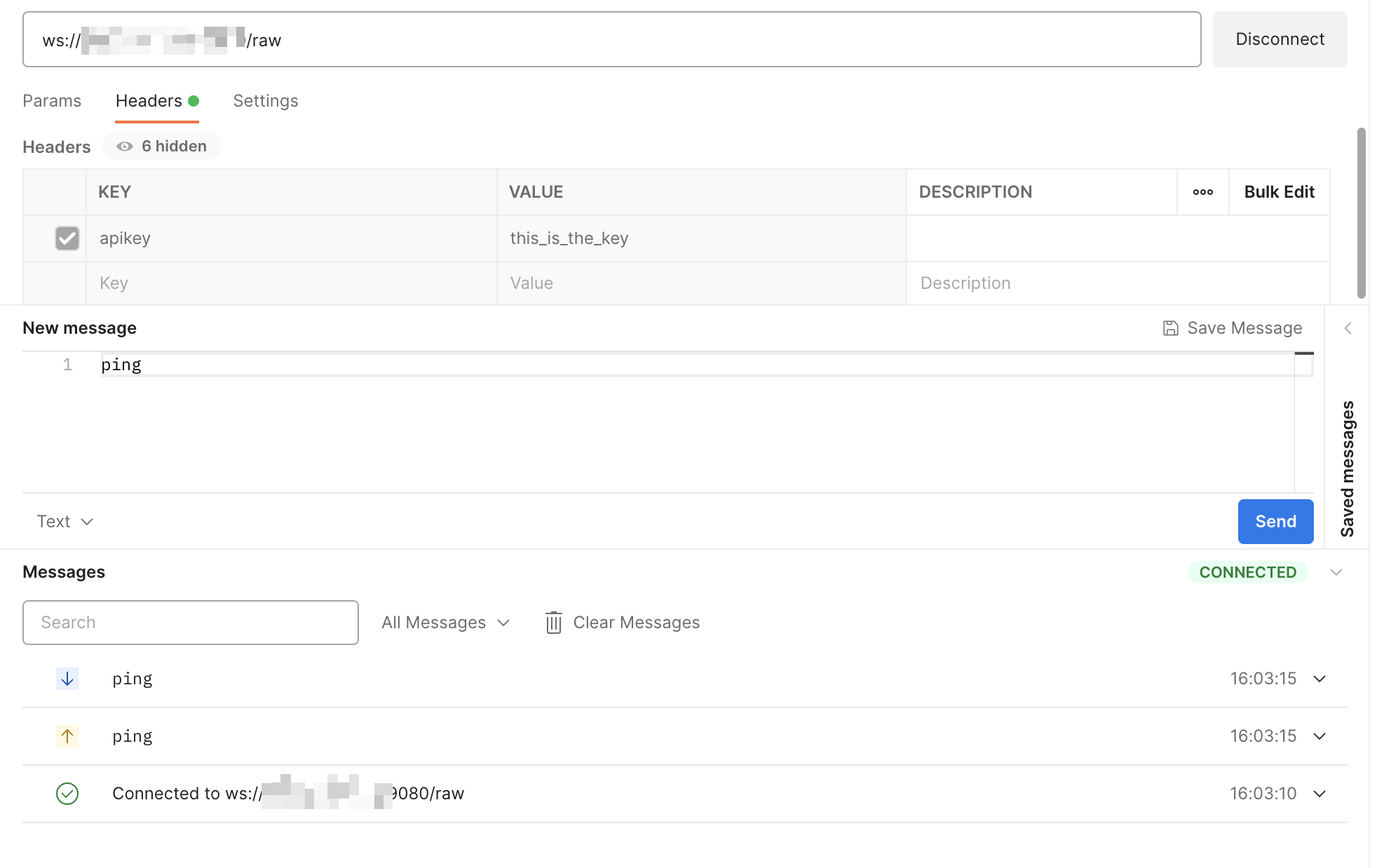You are viewing a plain text version of this content. The canonical link for it is here.
Posted to notifications@apisix.apache.org by GitBox <gi...@apache.org> on 2022/12/07 01:48:27 UTC
[GitHub] [apisix] bzp2010 commented on a diff in pull request #8462: docs: added websocket authentication
bzp2010 commented on code in PR #8462:
URL: https://github.com/apache/apisix/pull/8462#discussion_r1041660403
##########
docs/en/latest/tutorials/websocket-authentication.md:
##########
@@ -0,0 +1,144 @@
+---
+title: WebSocket Authentication
+keywords:
+ - API Gateway
+ - Apache APISIX
+ - WebSocket
+ - Authentication
+description: This article guides you on how to configure authentication for WebSocket connections.
+---
+
+<!--
+#
+# Licensed to the Apache Software Foundation (ASF) under one or more
+# contributor license agreements. See the NOTICE file distributed with
+# this work for additional information regarding copyright ownership.
+# The ASF licenses this file to You under the Apache License, Version 2.0
+# (the "License"); you may not use this file except in compliance with
+# the License. You may obtain a copy of the License at
+#
+# http://www.apache.org/licenses/LICENSE-2.0
+#
+# Unless required by applicable law or agreed to in writing, software
+# distributed under the License is distributed on an "AS IS" BASIS,
+# WITHOUT WARRANTIES OR CONDITIONS OF ANY KIND, either express or implied.
+# See the License for the specific language governing permissions and
+# limitations under the License.
+#
+-->
+
+Apache APISIX supports [WebSocket](https://en.wikipedia.org/wiki/WebSocket) traffic, but the WebSocket protocol doesn't handle authentication. This article guides you on how to configure authentication for WebSocket connections.
+
+## WebSocket Protocol
+
+To establish a WebSocket connection, the client sends a WebSocket **handshake** request, for which the server returns a WebSocket handshake response, see below:
+
+**Client Request**
+
+```text
+GET /chat HTTP/1.1
+Host: server.example.com
+Upgrade: websocket
+Connection: Upgrade
+Sec-WebSocket-Key: x3JJHMbDL1EzLkh9GBhXDw==
+Sec-WebSocket-Protocol: chat, superchat
+Sec-WebSocket-Version: 13
+Origin: http://example.com
+```
+
+**Server Response**
+
+```text
+HTTP/1.1 101 Switching Protocols
+Upgrade: websocket
+Connection: Upgrade
+Sec-WebSocket-Accept: HSmrc0sMlYUkAGmm5OPpG2HaGWk=
+Sec-WebSocket-Protocol: chat
+```
+
+**Handshake Workflow**
+
+
+
+## WebSocket Authentication
+
+Apache APISIX supports several ways to do authentication, for example: [basic-auth](https://apisix.apache.org/docs/apisix/plugins/basic-auth/), [key-auth](https://apisix.apache.org/docs/apisix/plugins/key-auth/), [jwt-auth](https://apisix.apache.org/docs/apisix/plugins/jwt-auth/), and so on.
+
+When establishing one connection from Client to Server, in the **handshake** phase, APISIX first checks its authentication information, then chooses to proxy this request or deny it directly.
+
+### Pre-requisite
+
+1. One WebSocket server as the Upstream server. In this article, let's use [Postman's Public Echo Service](https://blog.postman.com/introducing-postman-websocket-echo-service/): `wss://ws.postman-echo.com/raw`.
+2. APISIX 3.0 Installed.
+
+:::tip
+
+APISIX 3.0 and APISIX 2.x are using different Admin API endpoint. Please check [APISIX 3.0 Deployment Modes](https://apisix.apache.org/docs/apisix/deployment-modes/).
+
+:::
+
+### Key Auth
+
+#### Create one Route
+
+:::tip
+In this article, when using Apache APISIX 3.0:
+
+1. The Upstream server is using `wss` protocol, so we should set `scheme` as `https` in the `upstream` block.
+2. Set `enable_websocket` as `true`.
+:::
+
+```sh
+curl --location --request PUT 'http://127.0.0.1:9180/apisix/admin/routes/1' \
+--header 'X-API-KEY: edd1c9f034335f136f87ad84b625c8f1' \
+--header 'Content-Type: application/json' \
+--data-raw '{
+ "uri": "/*",
+ "methods": ["GET"],
+ "enable_websocket": true,
+ "upstream": {
+ "type": "roundrobin",
+ "nodes": {
+ "ws.postman-echo.com:443": 1
+ },
+ "scheme": "https"
+ }
+}'
+```
+
+#### Create one Consumer
+
+```sh
+curl --location --request PUT 'http://127.0.0.1:9180/apisix/admin/consumers/jack' \
+--header 'X-API-KEY: edd1c9f034335f136f87ad84b625c8f1' \
+--header 'Content-Type: application/json' \
+--data-raw '{
+ "username": "jack",
+ "plugins": {
+ "key-auth": {
+ "key": "this_is_the_key"
+ }
+ }
+}'
+```
+
+#### Connect without Key
+
+Connect `ws://127.0.0.1:9080/raw` without `key`, APISIX returns `401 Unauthorized` status code.
+
+
Review Comment:
Why is a mosaic used in the picture? 🤔
##########
docs/en/latest/tutorials/websocket-authentication.md:
##########
@@ -0,0 +1,144 @@
+---
+title: WebSocket Authentication
+keywords:
+ - API Gateway
+ - Apache APISIX
+ - WebSocket
+ - Authentication
+description: This article guides you on how to configure authentication for WebSocket connections.
+---
+
+<!--
+#
+# Licensed to the Apache Software Foundation (ASF) under one or more
+# contributor license agreements. See the NOTICE file distributed with
+# this work for additional information regarding copyright ownership.
+# The ASF licenses this file to You under the Apache License, Version 2.0
+# (the "License"); you may not use this file except in compliance with
+# the License. You may obtain a copy of the License at
+#
+# http://www.apache.org/licenses/LICENSE-2.0
+#
+# Unless required by applicable law or agreed to in writing, software
+# distributed under the License is distributed on an "AS IS" BASIS,
+# WITHOUT WARRANTIES OR CONDITIONS OF ANY KIND, either express or implied.
+# See the License for the specific language governing permissions and
+# limitations under the License.
+#
+-->
+
+Apache APISIX supports [WebSocket](https://en.wikipedia.org/wiki/WebSocket) traffic, but the WebSocket protocol doesn't handle authentication. This article guides you on how to configure authentication for WebSocket connections.
+
+## WebSocket Protocol
+
+To establish a WebSocket connection, the client sends a WebSocket **handshake** request, for which the server returns a WebSocket handshake response, see below:
+
+**Client Request**
+
+```text
+GET /chat HTTP/1.1
+Host: server.example.com
+Upgrade: websocket
+Connection: Upgrade
+Sec-WebSocket-Key: x3JJHMbDL1EzLkh9GBhXDw==
+Sec-WebSocket-Protocol: chat, superchat
+Sec-WebSocket-Version: 13
+Origin: http://example.com
+```
+
+**Server Response**
+
+```text
+HTTP/1.1 101 Switching Protocols
+Upgrade: websocket
+Connection: Upgrade
+Sec-WebSocket-Accept: HSmrc0sMlYUkAGmm5OPpG2HaGWk=
+Sec-WebSocket-Protocol: chat
+```
+
+**Handshake Workflow**
+
+
+
+## WebSocket Authentication
+
+Apache APISIX supports several ways to do authentication, for example: [basic-auth](https://apisix.apache.org/docs/apisix/plugins/basic-auth/), [key-auth](https://apisix.apache.org/docs/apisix/plugins/key-auth/), [jwt-auth](https://apisix.apache.org/docs/apisix/plugins/jwt-auth/), and so on.
+
+When establishing one connection from Client to Server, in the **handshake** phase, APISIX first checks its authentication information, then chooses to proxy this request or deny it directly.
+
+### Pre-requisite
+
+1. One WebSocket server as the Upstream server. In this article, let's use [Postman's Public Echo Service](https://blog.postman.com/introducing-postman-websocket-echo-service/): `wss://ws.postman-echo.com/raw`.
+2. APISIX 3.0 Installed.
+
+:::tip
+
+APISIX 3.0 and APISIX 2.x are using different Admin API endpoint. Please check [APISIX 3.0 Deployment Modes](https://apisix.apache.org/docs/apisix/deployment-modes/).
+
+:::
+
+### Key Auth
+
+#### Create one Route
+
+:::tip
+In this article, when using Apache APISIX 3.0:
+
+1. The Upstream server is using `wss` protocol, so we should set `scheme` as `https` in the `upstream` block.
+2. Set `enable_websocket` as `true`.
+:::
+
+```sh
+curl --location --request PUT 'http://127.0.0.1:9180/apisix/admin/routes/1' \
+--header 'X-API-KEY: edd1c9f034335f136f87ad84b625c8f1' \
+--header 'Content-Type: application/json' \
+--data-raw '{
+ "uri": "/*",
+ "methods": ["GET"],
+ "enable_websocket": true,
+ "upstream": {
+ "type": "roundrobin",
+ "nodes": {
+ "ws.postman-echo.com:443": 1
+ },
+ "scheme": "https"
+ }
+}'
+```
+
+#### Create one Consumer
+
+```sh
+curl --location --request PUT 'http://127.0.0.1:9180/apisix/admin/consumers/jack' \
+--header 'X-API-KEY: edd1c9f034335f136f87ad84b625c8f1' \
+--header 'Content-Type: application/json' \
+--data-raw '{
+ "username": "jack",
+ "plugins": {
+ "key-auth": {
+ "key": "this_is_the_key"
+ }
+ }
+}'
+```
+
+#### Connect without Key
+
+Connect `ws://127.0.0.1:9080/raw` without `key`, APISIX returns `401 Unauthorized` status code.
+
+
+
+#### Connect with Key
+
+1. Add one header `apikey` with value `this_is_the_key`;
+2. Connect `ws://127.0.0.1:9080/raw` with `key`, it's successfully.
+
+
Review Comment:
ditto
--
This is an automated message from the Apache Git Service.
To respond to the message, please log on to GitHub and use the
URL above to go to the specific comment.
To unsubscribe, e-mail: notifications-unsubscribe@apisix.apache.org
For queries about this service, please contact Infrastructure at:
users@infra.apache.org